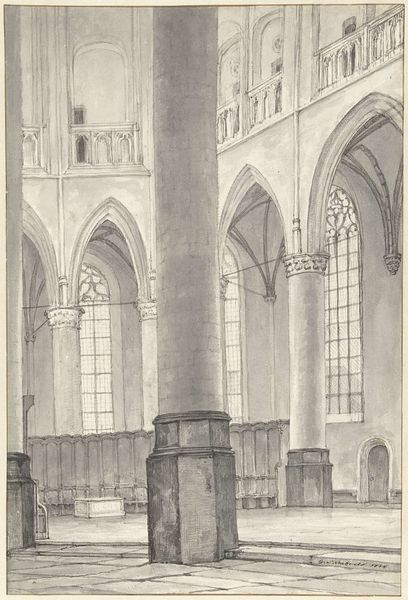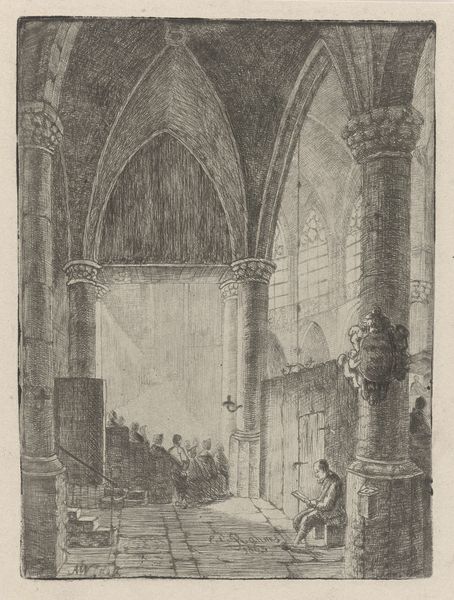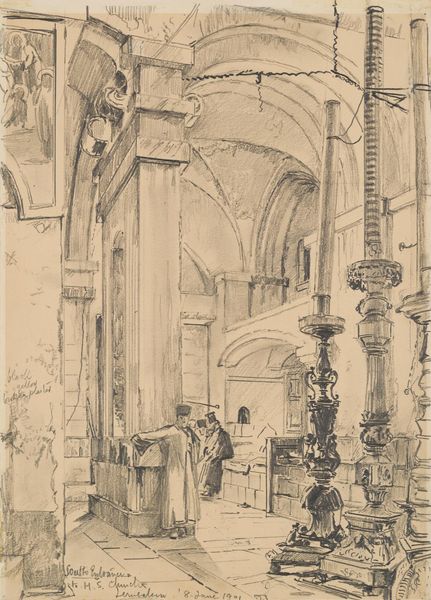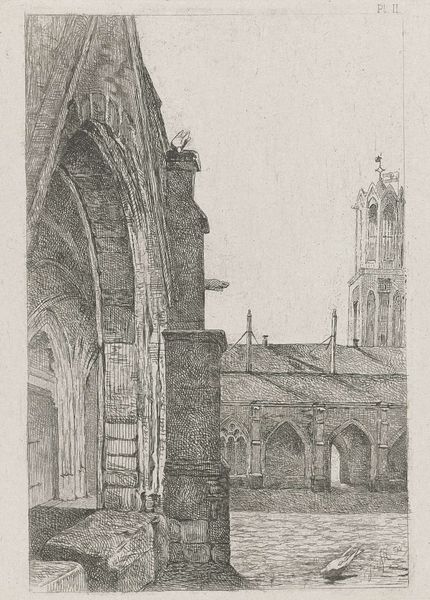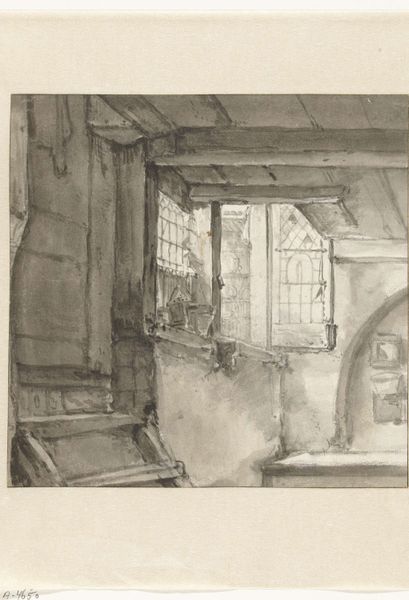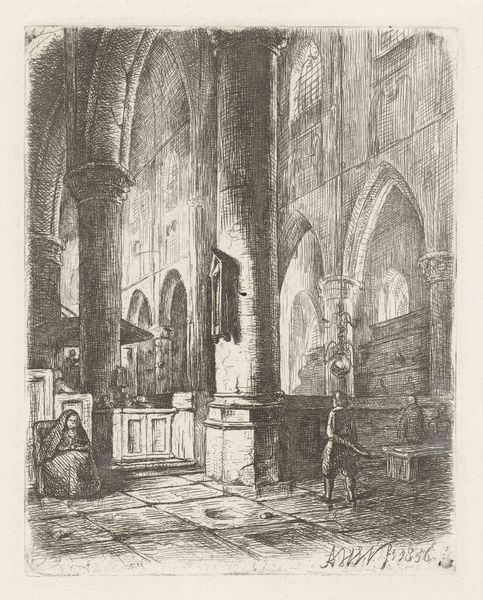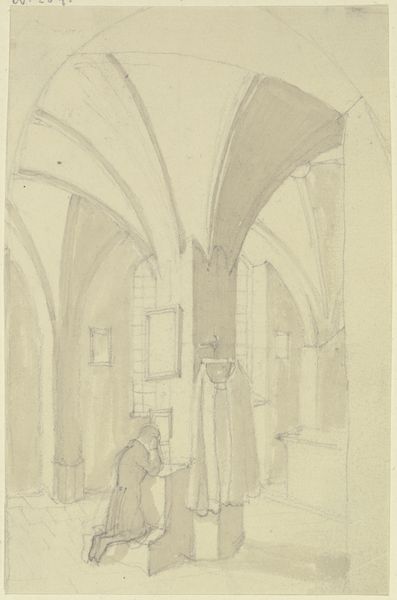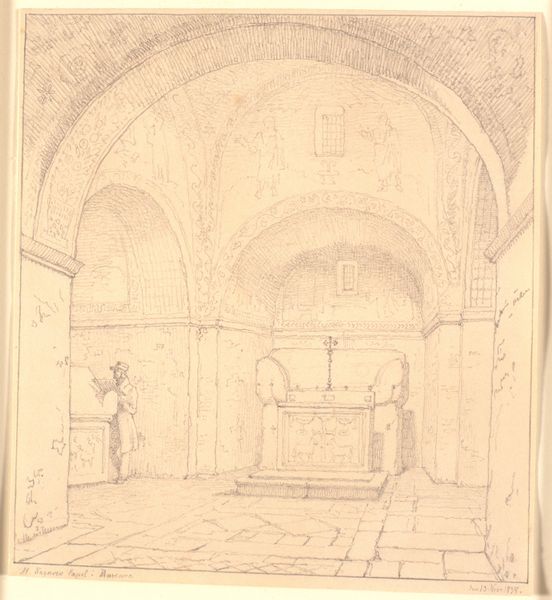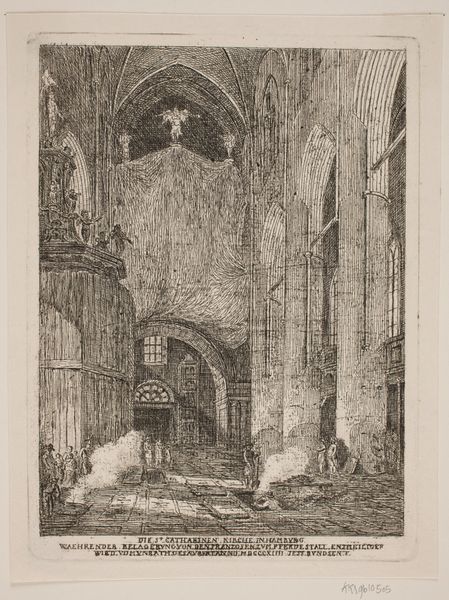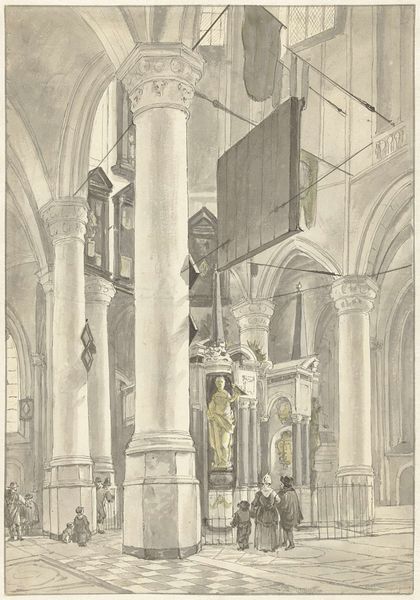
View of the Transept of the Nieuwe Kerk, Amsterdam, after the Fire of 1645 c. 1645 - 1646
0:00
0:00
roelantroghman
Rijksmuseum
drawing, paper, ink, architecture
#
architectural sketch
#
drawing
#
aged paper
#
toned paper
#
baroque
#
mechanical pen drawing
#
pen sketch
#
pencil sketch
#
old engraving style
#
landscape
#
paper
#
personal sketchbook
#
ink
#
pen-ink sketch
#
pen work
#
architecture
Dimensions: height 317 mm, width 201 mm
Copyright: Rijks Museum: Open Domain
Curator: What a powerful image. Roghman created this pen and ink drawing, circa 1645-1646. It is called "View of the Transept of the Nieuwe Kerk, Amsterdam, after the Fire of 1645". Editor: My first thought? Devastation rendered with…tenderness. It’s strange, this sketch of the charred Nieuwe Kerk—it feels more like a lament than a stark record. The artist captured the stark scene with delicacy and it evokes such a quiet, melancholy mood. Curator: That’s a wonderful observation. You see the marks of the fire, the broken arches and ruined walls. But there is still a sense of the sacred that permeates the scene. Despite the obvious damage, you can still glimpse architectural features and motifs and that suggests not just cultural loss, but memory too. It serves to underscore what’s been lost but not entirely forgotten. Editor: Right, and the artist has a brilliant way of juxtaposing the permanence of faith against the fragile nature of existence, here laid bare by this architectural rendering that makes even the heaviest of walls look like charcoal scratch. There’s this deep spiritual unease – or is it peace? Maybe both. That grand window, seemingly untouched by the blaze, somehow reflects a resilience against despair? Curator: Exactly! The choice to depict this devastation through the cool detachment of a pen drawing amplifies those feelings. It’s Baroque but with a sobering tone – there's so much encoded Dutch Protestant reflection here: earthly things pass away, while heaven and, perhaps by implication, culture built for faith, may persist through catastrophe. The meticulous detail applied to the rendering highlights the magnitude of the loss while acknowledging the enduring power of human innovation that will rise again. Editor: What’s truly haunting is that what remains hints at even grander design which now remains lost, a testament of ephemeral beauty amid existential truths. There's such a tangible fragility present that really resonates through the ages, that even what we think of solid or everlasting is merely fleeting. Curator: Beautifully put. It becomes a powerful symbol of resilience, faith and continuity across a broken temporality. Editor: Yeah, and strangely empowering... a little.
Comments
No comments
Be the first to comment and join the conversation on the ultimate creative platform.
